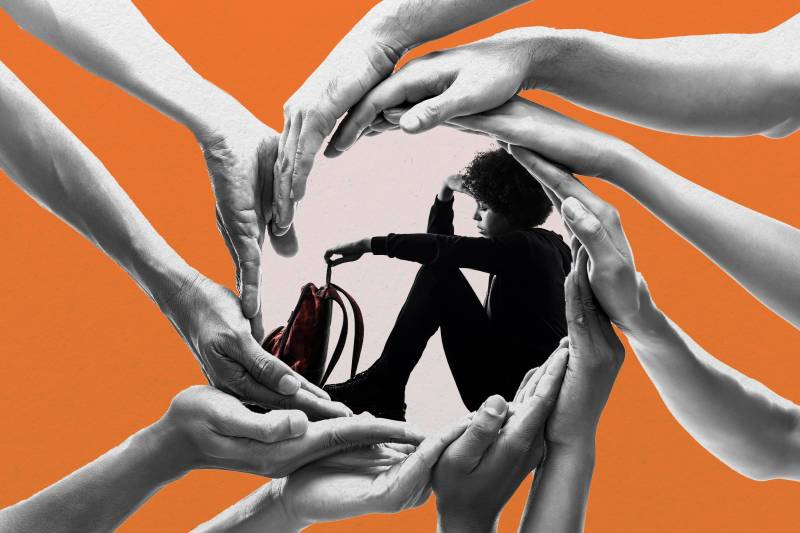And the problem goes far beyond LA: In 2021, fentanyl was involved in the vast majority of all teen overdose deaths – 84% – according to the Centers for Disease Control and Prevention. Among adolescents, fentanyl-related overdose deaths nearly tripled from 2019 to 2021, with almost a quarter involving counterfeit pills that didn’t come from any pharmacy.
Today, students caught with illegal drugs at school often face all kinds of consequences – including expulsion, suspension and possibly a criminal charge.
But amid the rise in teen overdoses, school systems across the country – from LA to Portland, Ore., to Prince George’s County, Md. – are beginning to change their approach.
LAUSD Superintendent Alberto Carvalho has been a driving force in this shift away from discipline and toward rehabilitation. He says schools “have a moral and professional obligation” to provide students with support, not just punishments.
“We never treat that child, that student, as a criminal element or someone who broke a rule. We ought to address the root causes of the problem rather than focusing on the possible consequence.”
What it looks like to focus on rehab
Medical attention is the top priority following a suspected student overdose on campus, the LAUSD principal says.
“The first concern is: Let’s get you well.”
After a student has been cleared and sent home from the hospital, his school’s efforts shift to getting the student back into the classroom.
Administrators and the school’s psychiatric social worker work with the student’s parents to create a re-entry plan. These plans are tailored to meet each student’s individual needs following an overdose, whether they’re struggling with addiction or accidentally overdosed on a counterfeit pill.
Check-ins with the in-school counselor, therapy sessions and out-patient rehabilitation with the nearby children’s hospital are all available at little to no cost to the student’s family.
And then, the principal says, “when the student does return, it’s a matter of making sure that we’re constantly monitoring.” That’s not just on school administrators and the psychiatric social worker, but also teachers, hall monitors and other school staff.
Sometimes “dailies” are part of a re-entry plan – paper cards that teachers sign each class period to show that the student showed up to class and stayed until the end. Some students are granted cards that get them out of class if they need to go see a counselor or therapist during the school day.
And students aren’t the only ones who need help with re-entry. The school’s psychiatric social worker, who we also aren’t naming, says a big portion of her job in the aftermath of an overdose is talking parents through very tough situations.
“Oftentimes parents have struggles with the idea that their student does have a substance abuse [problem],” she says. She does her best to educate parents on today’s changing drug landscape and how the family can best help their child, including by consenting to rehabilitation services.
The school has partnered with a community mental health organization to provide therapy for students at school. Therapists with the organization stop by every Friday for check-ins with specific students, and to be available for anyone who needs it.
Rehab is an expensive approach that takes a lot of resources
LAUSD isn’t the only district moving toward a rehabilitation model. Administrators at Prince George’s County Public Schools, in Maryland, are also exploring a transition away from zero tolerance. But they cite an important hurdle: It’s expensive. Someone has to foot the bill for the programs, and hire the staff to help parents navigate them.
Richard Moody, the supervisor of Student Engagement and School Support for Prince George’s County, is still trying to figure out how to pay for a rehabilitation model.
“We have a whole list of inpatient and outpatient programs, but a lot of them don’t service adolescents,” he says. Moody also finds that sometimes undocumented students and parents will avoid treatment programs all together for fear of filling out paperwork and putting their names in a system. The principal in LA says that’s a big reason the school decided to provide services on campus.
Like LAUSD, Prince George’s County is hoping to circumvent these barriers by hiring in-house care for students, but Moody says the timeline for that is uncertain.
His district has to rely on grant funding to hire new positions, like in-house substance abuse counselors, but it’s been a months-long wait to hear back on those grant applications.
A fast-evolving crisis meets slow school bureaucracies
The drug landscape may be changing quickly, but school bureaucracies are slow. It can be hard for districts to keep up.
At LAUSD, the principal is taking it day by day. Especially since the rehabilitative model comes with a lot of extra work.
When asked what keeps him going, he says, “The second week of June.” Getting the students to graduation, clean and armed with habits for a healthier life.



9(MDAxOTAwOTE4MDEyMTkxMDAzNjczZDljZA004))